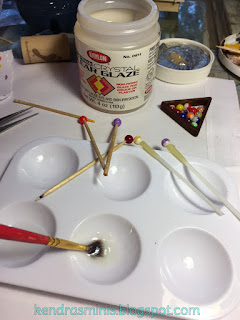A. SEWING THE FRONT AND LINING PANELS:
- Bottom hem – 4”plus 4” (8 “ total) across full and half widths after they have been seamed together. Your iron is your friend! Use the quilter’s square for easy measuring. Iron the double hem then use your blind hem stitch to sew it. Hem all panels before moving on so you can make sure the design is the same at the bottom edge. Iron the hems after blind stitching also.
- For the lining (or back side fabric), repeat all previous blog steps for cutting, matching and seaming the lining fabric. Then hem the lining fabric (step 1, above).
- Slip drapery weights into open hems and tack in.
- Measure up from bottom hem and mark the finished length (your rod height) all across the top on the wrong side of the face fabric (the fabric that will be pinch pleated). Use the fabric marker and the quilting square/yardstick to keep it straight and square with the selveges. My rod height was 111 so I measured up and marked 111” from the bottom hem. Write this measurement down if you are not making these all within a short time period.
- Baste the pleater or header tape onto wrong side of the face fabric (the fabric side where you want pinch pleats) just below the marked line. Baste it just about ½ inch down from the marked line. You can remove the basting later so use contrasting thread. In the photo below there was a lot of extra fabric to the right of the header tape that was trimmed off after sewing the side seams.
- Sew lining to front fabric on side and top seams starting with hems:
- Match up the hems. UNLIKE most drapes where the lining hem is a little above the face fabric, since these are reversible drapes, the two hems should match up at exactly the same length.
- When you get to the top, sew just above the buckram but don’t sew into buckram. (OK to sew the buckram into the side seams, though).
- Trim sides and top seam. Turn inside out, press.
- If desired, sew on front edge trim (different thread color for each side; 3.5 stitch length). I didn’t worry that I was putting trim on only one side or that it might show on the opposite fabric because when the curtains are turned around, that side with the trim becomes the “return” for the opposite side. You can even fold it back so it doesn’t show.
(Note – for my curtains one side was pleated with double butterfly pinch pleats. The reverse side (lining side) was the back side of those pleats – which looked like inverted pleats. Here is how I did it:
- First I calculated and spaced my pleats based on a finished panel width of 79” (one and one half fabric widths):
a. Returns - 5” each x 2 = 10” (unpleated area at each side hem)
b. 6” each pleat x 7 pleats per panel = 42” (6” is large for a pleat but scaled well for 111” length)
c. 4.5” each space between pleats x 6 spaces = 27”
d. Total of above = 10 + 42 + 27 = 79” - Mark pleats and spaces with water soluble fabric marker. I hand basted these since they were so stiff and thick – pins wouldn’t stay. To keep the pleats straight and even, fold the heading down the center of the pleat and keep the top edges square and aligned with each other while basting.
- Sew in the 7 pleats through the header tape. Remove basting stitches before next step or you won’t be able to flatten them out nicely.
- Here is something I did to make these curtains reversible – I sewed the rings inside a “pocket” made inside the pleat. This way there are no drapery pins to have to remove and re-insert each time I reverse my curtains.
- Open out and flatten the pleat centering the crease (for double ‘butterfly’ pleat). Note that in the photo below the next step (6) has already been done.
- Turn the panel over to the inverted pleat side. Stitch in the ditch (made by the pleat) starting 1-1/4 inch down from top to anchor the pleat on the opposite fabric side. Stitch just down to where the buckram ends (about 2-3/4inches total). I only stitched between the pins.
- After stitching, turn over to the pinch pleat side. The 1-1/4 inch un-stitched area leaves a ‘pocket’ for sewing in curtain rings deep enough to hide them.
- Sew in rings in the ‘pocket’. For the two ends (‘returns’) I just opened the top seam where the two fabrics were sewn together, removed stitches for about ½ inch and shoved the small ring down into there and tacked it in place.
- Tack pleats together near top with buttonhole thread.
- Press, hang.

























